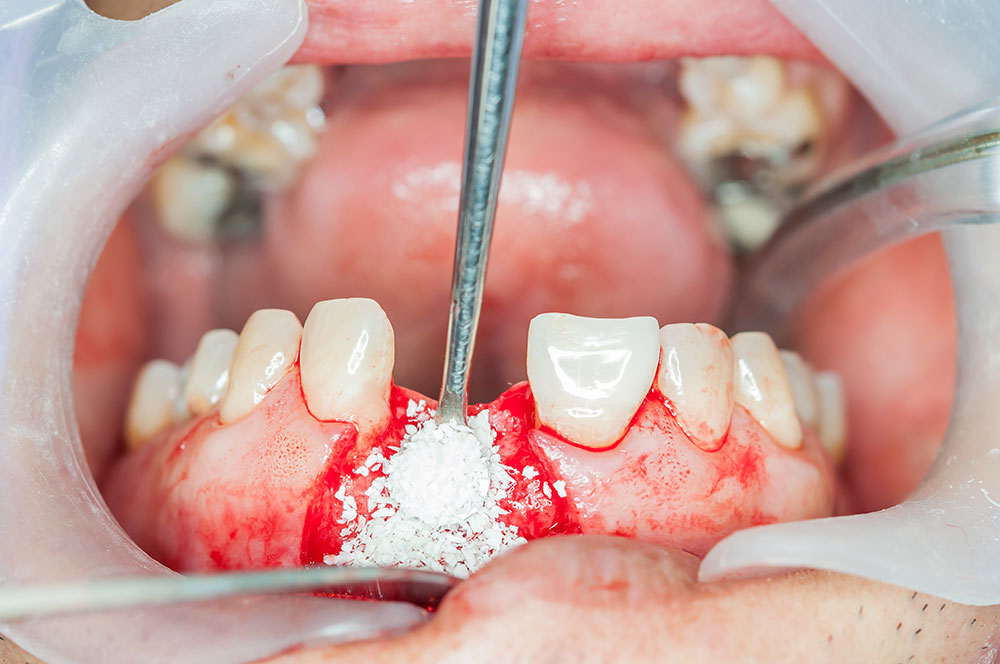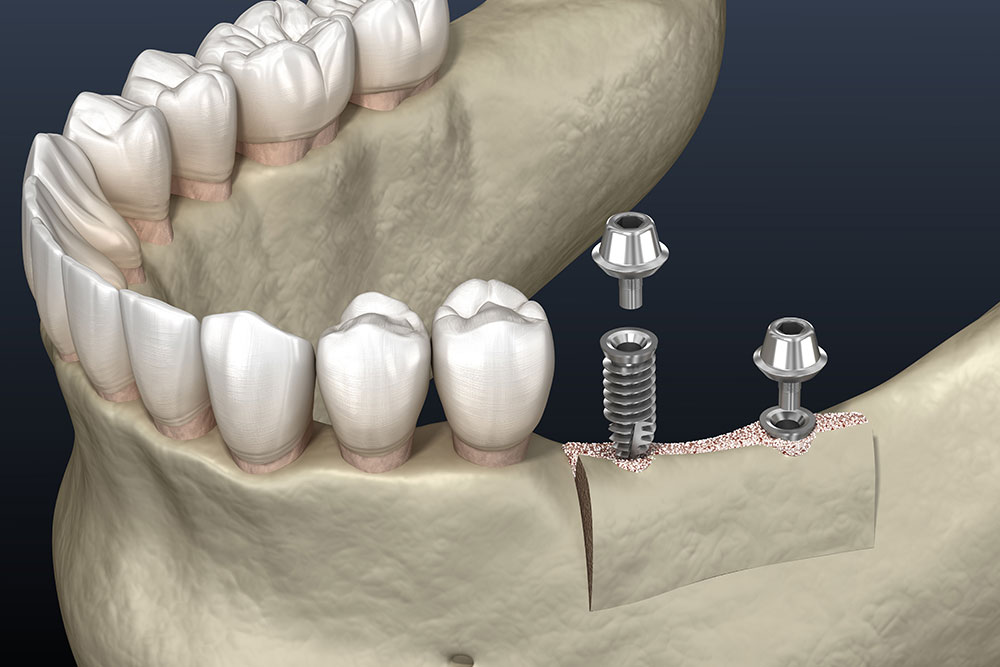Jawbone augmentation
Bone augmentation, or jawbone augmentation – whatever name you have heard and are interested in learning more about this procedure – you are in the right place.
We will instruct you in all the details regarding this procedure: what it means, what its purpose is and how it is performed.
What is a jawbone augmentation?
Jawbone augmentation, i.e. its regeneration, is performed if the bone is not of sufficient size for the installation of the implant. In this way, therefore, the necessary width and height of the jawbone is provided for the planned implantological intervention.
By augmentation of the lost jawbone, bone support is provided to the dental implant, while at the same time achieving the natural form of the alveolar arch and soft tissue. The first reason is functional (the implant must bear the load when fulfilling its function), while the second is aesthetic (a more beautiful and natural appearance of the gums after the installation of the implant).

Who are candidates for jawbone augmentation?
The amount of bone increases in those places where it was lost due to long-term and untreated periodontopathy and toothlessness, that is, where a better bone base and greater support for the dental implant is needed.
Alveolar bone augmentation is also used in cases where the teeth and alveoli in the vicinity of one or more missing teeth are at risk. Namely, the resulting resorption of bone tissue can lead to destabilization of nearby teeth and alveolar bone, and cause long-term complications.
Tooth loss is not necessarily associated with poor oral hygiene and periodontitis, but also with chronic dentogenic infections and traumatic injuries to the teeth and jaws.
How is jawbone augmentation performed?
Jawbone augmentation is performed by transplanting the patient’s own bone or using artificial bone. The first type of bone graft is called autograft. Oral surgeons and implantologists take it from the patient’s own jawbone, in the form of a flap or block. Synthetic or artificial bone is obtained from bovine hemodialysate and is used in the form of granules. The donor regions of the autotransplant are the chin and the retromolar region in the lower jaw, then the tubers in the upper jaw, as well as bony exostises.
Autotransplant is considered the gold standard in oral surgery and implantology because it increases the necessary support of the jawbone without rejection. At the same time, it promotes faster healing and new bone formation.
The special advantage of these autotransplants is that only one surgical procedure is performed in the mouth. For all the above reasons, autotransplant has a great advantage over artificial and other transplants.
Operational flow
Jawbone augmentation can be performed in both jaws if there is minimal bone base of the patient. In order to determine the degree of bone tissue volume loss, it is first necessary to make an X-ray or orthopantomography of the jaw.
Increasing the volume of the jawbone is mostly performed under local anesthesia. Patients with special needs and those who are very afraid undergo analgesia.
The oral surgeon first makes an incision in the alveolar bone to expose the jawbone. Then, with special instruments, the oral surgeon grafts bone granules or a flap to the appropriate place.
The bone transplant is covered with a membrane that has a prophylactic function. The alveolar tissue is then repositioned, and the incision is sutured.
In order to speed up the process of healing and regeneration of bone tissue, sometimes the autotransplant is enriched with platelets from the patient’s blood plasma. This procedure is known as the PRF method (Platelet Rich Fibrin).
The fibrin clot releases growth factors and promotes the formation of new bone and blood vessels, shortening the recovery period.
For the postoperative period, the oral surgeon prescribes analgesics for pain reduction and antibiotics as needed. Recovery usually takes a few days, after which the patient can return to his usual activities.
Is it possible to augment jawbone and implant(s) at the same time?
With the incredibly fast development of implantology, today it is possible to perform procedures that were only dreamed of until recently.
Depending on the situation, sometimes the implants are placed at the same time as the bone augmentation.

In more severe cases, however, it is necessary to perform bone augmentation first, and implant implants only after the necessary healing time. This period is 6–9 months for the majority.
In some patients, it is necessary to lift the membrane of the floor of the maxillary sinus (sinus lift) before installing the implant in the upper jaw (maxilla).
